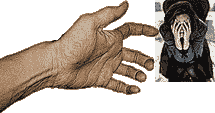Is The Doctrine Of Double Effect Plausible??
When pondering the questions that arise in a situation where Euthanasia is concerned, a question that must be considered is:
Can one do something that one knows will have a certain consequence without intending to produce that certain consequence?
When studying the doctrine of Double Effects, the answer becomes more and more apparent.
The doctrine of Double Effects states that an action having both good and bad effects is plausible and permissible if the following two conditions are adequately served:
1) the bad effect is not intended in the certain situation as being the means or as the end, and
2) the good effect outweighs the bad effect.
In the situation of euthanasia, or in any situation where there can be both good effects and bad effects, the first condition deems itself as extremely important. In the euthanasia case, the first condition states that death is not an intended result of the actions that are incurred. Therefore, it does seem plausible that, for example, a person who’s life is being supported by machinery and who is in a great deal of pain can receive medication that would in fact shorten that person’s life.
However, it can then be argued that it is not considered morally right to give that patient a lethal dose of medication in order to alleviate that pain. A supporter of the doctrine of Double Effects would say in that situation that giving a lethal dose of medication would only serve to the end of killing that patient, instead of merely alleviating the pain. This, the supporter of the doctrine of Double Effects would say, is going against the first, and definitely more important, condition of permissibility in the doctrine itself, for one cannot administer the lethal medication if the intention of administering that medication is to in fact kill the patient.
Death in these cases cannot be the means or the end.
Therefore, according to the doctrine of Double Effects, an action in a particular situation can have a certain consequence without the subject intending on that certain consequence to actually happen.


Copyright Janet Kuypers.
All rights reserved. No material
may be reprinted without express permission.
|

![]()

![]()






